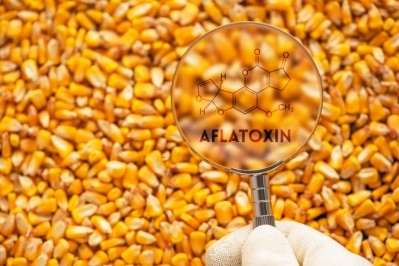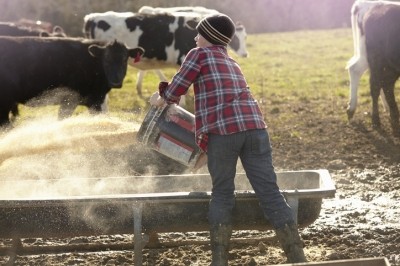Scientists still searching for solutions to alleviate mycotoxins from grains

“Enzyme strategies are very promising but they have been slow to develop because of the complexities around isolating what those enzymes were, establish what bacteria were producing them and trying then to select for increased production of those particular enzymes,” said Dr Todd Applegate, Poultry Science Department Head and Professor at the University of Georgia, addressing a webinar audience via the Phibro Academy platform.
However, he said that new technologies are emerging to accelerate this lengthy selection process.
“It is really coming from next generation sequencing looking at metagenomics and then genetically engineering and inserting the enzymes identified from those molecular processes into another microbe for a production vector.”
‘New technologies and approaches to deal with mycotoxins’
In his presentation on ‘New technologies and approaches to deal with mycotoxins’, Applegate said that despite these complexities there were a lot of advantages to deploying enzymes for controlling mycotoxins at a feed level.
“The positives of an enzyme strategy are that it is highly specific and effective because it is rapid and irreversible, preserves other dietary nutrients (in contrast to binders), and is typically safe for animals and humans,” he noted.
However, the ‘cons’ of enzymes are that formulators need to think about their stability and how they will work in different matrices: “Are they stable enough to withstand the pelleting process and reach the gastro-intestine intact to have an impact on mycotoxins? Are the conditions right for the enzyme to work? As we think about enzymes, it’s important to consider the matrix within which they are going to have to work; consider factors like pH specificity, access to substrates, the water-to-solid relationship and passage rate through the digestive tract,” Dr Applegate advised.
What’s more, these factors vary greatly between animals.
“Conditions are very different in a seven-day broiler chick versus a finishing pig, and these different environments impact how enzymes work,” he noted.
Also, the same enzyme that works against one mycotoxin won’t necessarily be effective against another. For example, there are a number of peroxidase and laccase enzymes that can effectively degrade aflatoxin B1, whereas deoxynivalenol (DON) is one of the tougher mycotoxins to treat through enzymes, as its structure makes it very stable and resistant to degradation, according to Dr Applegate.
Binders for aflatoxin
Another method for controlling mycotoxins is the use of binders. However, once again, Dr Applegate emphasized that a ‘one size fits all’ approach will not work.
“Binders can take advantage of the molecular structures of particular mycotoxins. The fact that aflatoxin is charged and is a relatively flat molecule means that it will fit nicely into particular binders and be retained within those binders. With fusarium and zearalenone, T-2 toxin and DON, the binding capability is much less,” said Dr Applegate.
He added that different binders have varying efficacy on different mycotoxins. Organic binders, for example, are typically not as effective as inorganic binders on aflatoxin.
“The take home message is that the strategy has to be very specific,” he said.
Dr Applegate said that limited advancements had been made in the last 20 years in the area of chemical control methods.
“For aflatoxin contamination, either bisulfites or ammoniation are the primary methods for detoxifying certain grains…ozonation is a method that still needs more research, but it is showing promise for detoxifying aflatoxin in corn,” he said.
Microbiological methods
Then there are microbiological methods, such as ethanol fermentation and dietary interventions, which offer potential, according to Dr Applegate.
“It was from these methods that we began understanding more about how microbial enzymes can hydrolyze the mycotoxin itself,” he noted.
However, he cautioned that there are some considerations to bear in mind when working with microbiological methods:
“First of all, we need to realize that hydrolysis does not mean the toxicity has gone; there are still some non-toxic and lower toxic metabolites that occur. With ethanol fermentation, certain probiotic mixtures such as lactobacillus and propionibacterium may reduce some of that contamination, particularly with aflatoxin, but it is very specific to those bacteria.
“Also realize that with dietary interventions, the protective effects coming from micro-minerals or other strategies may be specific to a particular organ system and may not work in the same way against all mycotoxins.”
Physical methods
Besides biological and chemical approaches, there are several physical methods for controlling mycotoxins.
“These include cleaning to screen out fine materials to reduce fusarium, sorting using a black light for aflatoxin, and color sorting, which is unproven but promising,” said Dr Applegate.
Then there are thermal treatments for mycotoxins that aren’t heat resistant. Extrusion can work for fusarium, for example.
One physical method that Dr Applegate said was of particular interest for DON is density segregation, which can be done through aeration or Near Infrared (NIR).
“Seeds with a higher bushel weight tend to be less contaminated, so you can use aeration to separate the higher weight seeds from the lower weight ones. It allows for some additional throughput versus other technologies,” he noted.
NIR is more expensive but also more precise and has been proven in fusarium infected seeds, he said. This method uses a rotating drum with sensors that allows characteristics such as protein, starch and fiber to be analyzed and separates seeds whose profile is indicative of contamination.
Prevention through gene selection?
With so much resource going into the development and testing of these technologies, it begs the question why we can’t make genetic progress by breeding animals for mycotoxin resistance.
Dr Applegate’s response was this: “Our ability to make substantial progress through multi-trait selection programs is very limited, so really we are looking at other mechanisms to intervene in the broad array of mycotoxins animals may be exposed to.”
While there’s currently no perfect approach to dealing with mycotoxins, he said that scientists all over the world continue to examine the molecular structure of mycotoxins and test new technologies and approaches that may someday alleviate this major feed concern.














